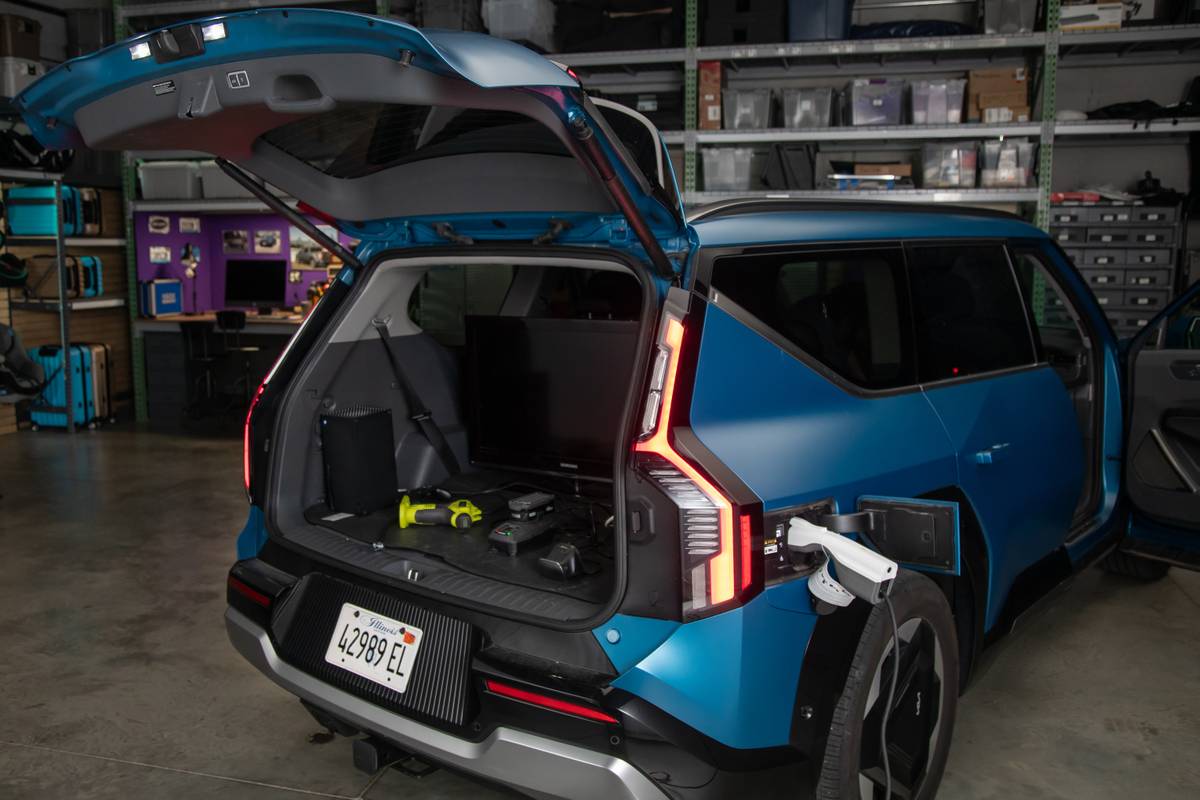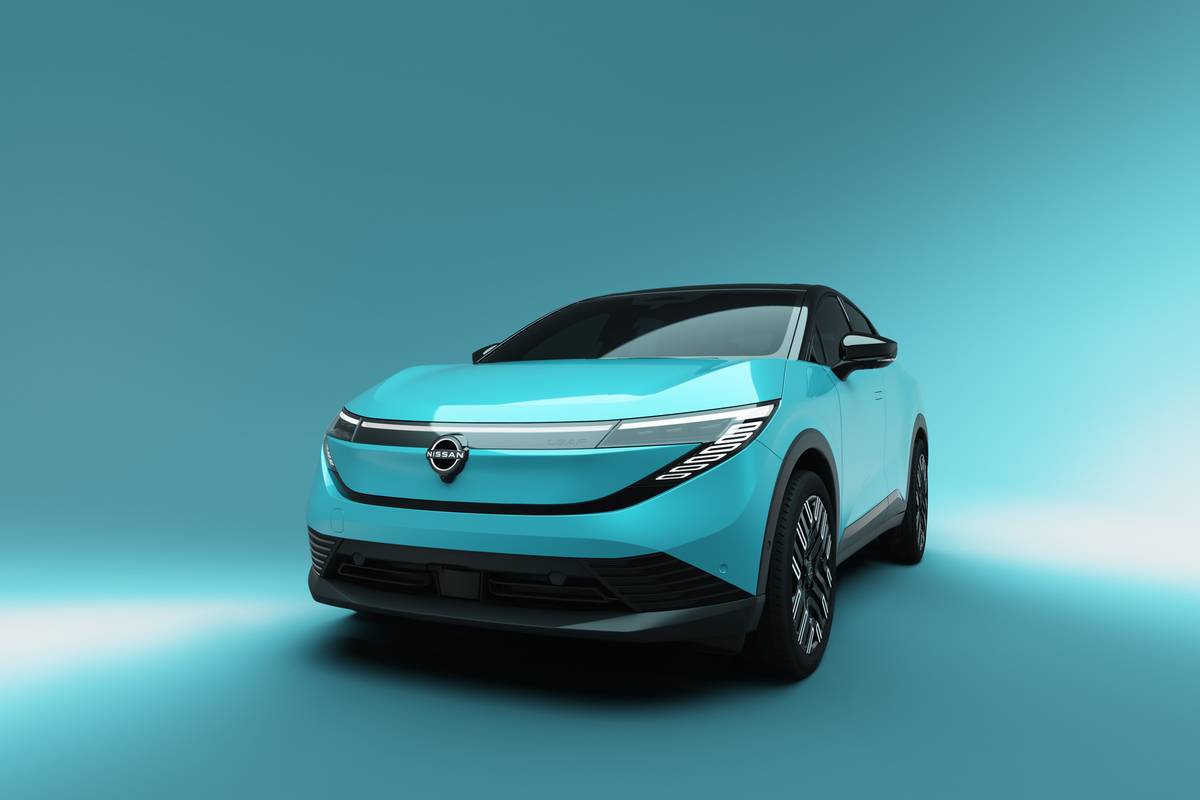TheMercuryNews.com's view
The new millennium doesn’t start until Jan. 1, 2001, but there’s little doubt that the products that can associate themselves with the year 2000 will enjoy special cachet.
And, according to the government, any new car that goes on sale after Jan. 1, 1999, can call itself a 2000 model. Along with the Plymouth and Dodge Neon, the Buick LeSabre has a good chance to be the first to grab that distinction.
The LeSabre makes its official debut at the North American International Auto Show in Detroit in early January, then goes on sale in the first quarter of the year. General Motors began showing pre-production versions to journalists as early as late September along California’s Central Coast.
Ironically, while it might become known as the first car of the 21st century, the LeSabre remains something of a conservative statement about American auto making. It’s a full-size sedan that can hold six people. It has a huge trunk. The average age of LeSabre buyers is 66, although Buick executives expect that number to drop with the arrival of the new version.
But despite being a car like cars used to be, the LeSabre remains very popular. It has been the best-selling full-size sedan for seven years, topping the Mercury Grand Marquis, Ford Crown Victoria, Pontiac Bonneville, Oldsmobile Eighty Eight and Toyota Avalon in retail sales, according to LeSabre brand manager Joe Fitzsimmons. Chrysler’s heralded LH sedans — the Dodge Intrepid and Chrysler Concorde — have gotten much more ink since they arrived in 1993, but Buick’s LeSabre has attracted more buyers.
In fact, more than 1 million buyers have purchased LeSabres during the past eight years. 1997 sales topped 150,000, which made the LeSabre the best-selling Buick, the sixth most-popular GM car, the 13th most-popular passenger car and the 26th most-popular car or truck on the U.S. market.
For Buick dealers, the LeSabre represents about one-third of their sales and about 40 percent of their new-car profit. “It’s Buick’s signature product,” said Jim Hall, a Detroit-based analyst with the California-based AutoPacific Group.
It’s a much-improved car for 2000, too. “They knew what they needed to do and they did it,” Hall said.
But even the people who spent years working on the 2000 LeSabre know they created an evolutionary product.
LeSabre buyers are conservative, but not reactionary, said Bill Porter, the Buick chief stylist who retired after designing the new LeSabre. “They want to keep up with the times. It’s just that they don’t want anything wacky or way out,” he said.
What they got was a car that moves forward — at a cautious pace.
At first glance, it’s not easy to detect the changes. But a little time spent with both the old and new versions of the LeSabre and things like flush door handles, shorter overhangs and the general absence of chrome make the new model a more contemporary package. Exterior touches, like a cleaner front end and clear-lens headlights help, too.
“I think we’ve been able to hit on some things that look good, but work quite well, too,” Porter said, mentioning that the roof has been designed so that rain doesn’t drench occupants when they open the door in a storm. “To me, that’s the sign of a mature product like the LeSabre. It’s not really a kid car. It’s a working family car that, hopefully, will appeal to great many people.”
What makes the LeSabre so appealing, Fitzsimmons said, is that it does so many things well. It looks good, drives well, has top quality, carries lots of safety features and provides plenty of comfort, he said.
Most important, Fitzsimmons said, is reliability. Describing the LeSabre, he uses words like “worry-free,” “peace of mind” and “bullet-proof.”
“Owners have tremendous confidence and trust in the car,” he said. “It starts every time. It won’t break down somewhere along the way.”
The LeSabre was picked as Family Circle’s 1998 amily car of the year. IntelliChoice, the Campbell company that calculates the true ownership costs of a vehicle, named the LeSabre as one of the best overall values in its class in 1998.
In short, buyers love the LeSabre’s “total package,” Fitzsimmons said. That’s why 53 percent of them buy another LeSabre — a very high owner loyalty rate. The 2000 model will “nail the needs” of current buyers, he said.
Buick is hoping the car will appeal to other buyers, too. Aging baby boomers who think of themselves as young will like such features as the LeSabre’s available five-passenger set-up (a six-passenger format is standard), 12-CD changer and sunroof, Fitzsimmons said.
Hall is unsure whether the new LeSabre will be effective in attracting aging boomers who have bought two or three or four Camrys or Accords. That is part of the car’s mission, said Bob Coletta, Buick’s general manager.
The car’s dimensions are little changed. Its wheelbase grows a little, but its length doesn’t. And while the actual width decreases by a half-inch, the rear hip room actually grows by two inches.
The engine — GM’s venerable 3.8-liter V-6 — carries over. It produces 205 horsepower and gets 19 mpg in the city and 30 mpg on the highway.
Compared to the current-generation LeSabre, the 2000 model has a much stiffer chassis that results in a smoother ride. Coletta said younger buyers might appreciate the improved ride, but current owners probably won’t notice much difference.
“From a dynamic standpoint, I actually like the way it works,” analyst Hall said. Although it’s not a car designed for the nearby Laguna Seca Raceway, the new model steers and handles more crisply than in the past.
On the safety front, the 2000 LeSabre has four air bags, new anti-lock four-wheel disc brakes and a new seat system — first seen in another GM product, the Saab 9-5 — with self-aligning head restraints that lessen the potential for whiplash injuries in a rear-impact collision. Front safety belts are attached to the seat, not the door frame, and all three rear passengers get shoulder and lap belts.
Although prices won’t be announced until just before the LeSabre reaches dealerships, Fitzsimmons expects little change from 1999 levels. That means an entry-level LeSabre Custom will start around $23,000 and a more nicely equipped LeSabre Limited will go for $26,500.
While it’s not obvious from looking at its present products — which include the Century, Regal, LeSabre and Park Avenue sedans — Buick is in the midst of a maelstrom of change. In November, Buick left 95 years of history behind when it moved its headquarters from Flint, Mich., to downtown Detroit. With the move, most of the white-collar staffers of Buick, Chevrolet, Cadillac, Oldsmobile and Pontiac-GMC now work in one building. The division also ended production of the Riviera coupe after 2,000 1999 models — and 1 million Riviera sales since 1963. Next fall, th e 3,000-employee Buick City plant in Flint will close.
Meanwhile, Coletta retires on Jan. 1. He’ll be replaced, but GM’s entire marketing structure has changed and the new Buick general manager won’t be a GM vice president, as Coletta was. Coletta retires after 43 years of GM service. His replacement joined the company in 1996. GM has shifted its focus away from Buick (and the other divisions) and toward the individual brands, like LeSabre and the others.
“Once we get the lump through the snake,” Coletta said, the changes will make for a stronger, more efficient General Motors.
Latest news



